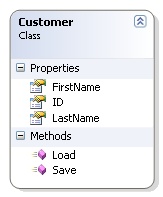In the last couple of years I have noticed a steadily growing interest in the .NET community around the Inversion of Control (IoC) and Dependency Injection (DI) patterns. This is partly due to the fact that a number of excellent frameworks have emerged and gained popularity that allow us to use these designs in our applications relatively painlessly. One such framework is the open source Castle Project. In my opinion Castle is the best implementation of IoC and DI among many others that I have come across including Spring.NET, NInject, and ObjectBuilder. This is however my opinion; which framework you use largely depends upon your requirements and your preferences.
If you are just getting started with Castle or are curious about why the heck one should use IoC and DI, I strongly suggest you check out the 3-part article series by Simone Busoli. I just came across these articles and I can't stress enough how well they are written.





